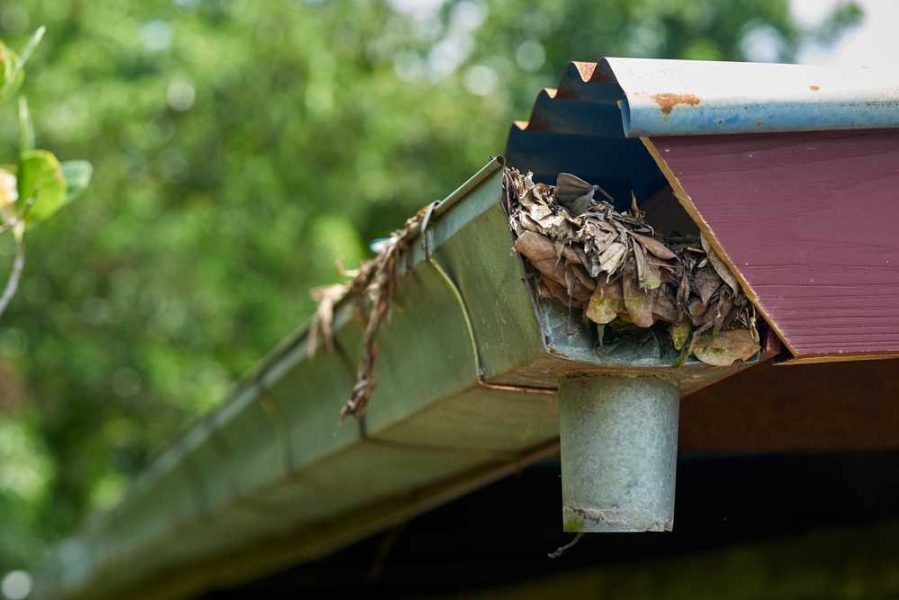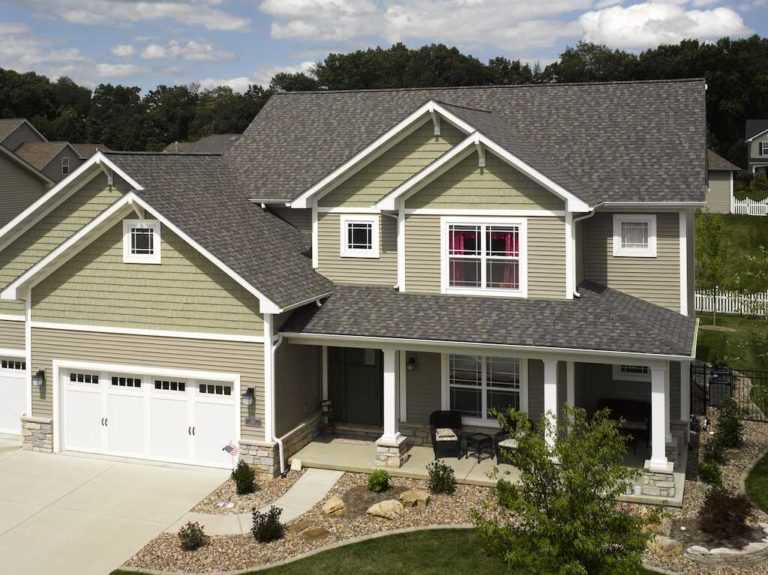Your gutters play a critical role in protecting your home from water damage. But after years of accumulation of leaves, debris, and exposure to the elements, they can begin to fail. If your gutters are showing any of these signs, consider replacing them.
Rust Spots Are Visible
If you inspect your gutters and notice rust forming, it’s a clue they may be nearing the end of their lifespan. The rust indicates that moisture has gotten between layers of the material, causing the metal to oxidize. Once rust takes hold, it tends to spread quickly. Before long, the compromised sections of the gutter can start leaking or even detach from your home. Replacing them before extensive rust damage occurs preserves your home’s value and prevents more serious issues.
Downspouts Are Loose or Leaking
Take a look at where downspouts carry water from the gutters to the ground. If any have come loose or show leaks, it suggests problems with your gutters. Deteriorating gutters sometimes separate from downspouts. Or the hanging attachments holding the downspouts work themselves free over time. Gutter joint leaks also frequently occur near downspouts. Have a professional thoroughly inspect your gutters if any downspouts show damage. Chances are good you’ll need a replacement.
You Notice Soggy Areas Around the Foundation
Pay attention to the ground around your home’s foundation. If you consistently find soggy patches of soil after rain, it likely means your gutters aren’t effectively diverting water away from the foundation. Instead of channeling water into downspouts, damaged gutters just spill it around your home’s perimeter. Left unchecked, foundation moisture intrusion can cause all types of structural issues. Don’t ignore chronically wet foundation soil—have your gutters examined right away.
Plants Are Growing in the Gutters
When you begin noticing small plants sprouting right in your gutters, it’s a clear sign they need replacing. Vegetation takes root in gutters full of accumulated organic debris that essentially transforms into soil. Needless to say, plants have no place to clog up your gutters and downspouts. If they’ve already taken up residence, expect major blockages and drainage problems. Get your landscaping under control and have fresh, debris-free gutters installed.
Gutters Sag Between Supports
Do you see sections of gutter sagging downward between brackets that attach them beneath roof edges? The gradual distortion means gutters are separating from the roof line. It occurs because the mounting hardware ultimately cannot withstand years of gravity, snow loads, and gutter debris weighed down across lengthy spans. Sagging leads to pooling water, more debris accumulation, and eventual complete system failure. Have old gutters removed and new ones hung using more closely spaced bracketing.
Leaks Appear Despite Cleanings
You likely clean your gutters periodically to remove leaves and debris. But if you still encounter leaks after cleaning them, it generally means they’ve reached the end of their useful life. The small fractures and holes permitting leaks to happen will only get worse over time. Save yourself future headaches by replacing leak-prone gutters now. Make sure new gutters feature solid, watertight seams that are not present on your old, worn-out ones.
Gutters Overflow During Rainstorms
Here’s a clear indicator your gutters can’t handle heavy rain: they overflow rather than properly diverting water into downspouts. Inadequate drainage during storms shows your gutters are full of debris, suffer from blockages, or feature low spots. They essentially have lost capacity and can no longer sufficiently contain and transport runoff. Any gutter overflowing rather than redirecting water needs replacement promptly.
Wood Rot Visible Under Gutters
Finally, inspect the woodwork directly beneath your gutters. If you discover soft, rotting wood starting from the underside, you can bet your gutters leak. The chronic moisture exposure rots away fascia boards, soffit panels, and roof decking. Ignoring the situation allows wood decay to spread into wall framing and rafters too. Don’t put off replacing faulty gutters once you see exterior wood rot in the vicinity—the damages will only worsen until you tackle the source of moisture intrusion.
Downspouts Drain Too Close to the House
Take a look at where your downspouts direct water away from the house after it exits the gutter system. If the outflow runs too close to the foundation before entering underground drain pipes, it’s a sign your gutters need adjusting or replacing. Having downspouts pour large volumes of water too close to your home’s perimeter can lead to flooding, moisture intrusion, and foundation settling over time.
When gutters get replaced, make sure the new downspouts extend several feet away from the house using flexible drain pipes before emptying into underground systems. Positioning downspout outflow well away from the foundation gives the water time to fully absorb into the ground without pooling around your home. This minor adjustment prevents extensive foundation repairs down the road.
Gutters Lack Protective Dome Strainers
Finally, check if your existing gutters lack basic debris strainers over the openings where rain enters. Known as dome strainers or hoods, these inexpensive attachments sit over gutters and block leaves, sticks, pine needles, and other debris from sliding into your gutters as rainwater flows in. If your gutters don’t have dome strainers already installed, it provides one more reason to get them replaced. Newer gutters come standard with these protective mechanisms or make strainer add-ons simple to integrate.
Safeguarding your roof edges with strainers means you avoid costly gutter cleaning and blockages in the future. Investing in high-quality new gutters brings peace of mind.
Your home constitutes most people’s greatest asset. Defending it from unnecessary damage should motivate everyone to address warning signs like chronic gutter issues. If your gutters exhibit any of these problems, partner with a knowledgeable contractor to explore replacement options using quality components. They can ensure your new gutters have adequate capacity and incorporate preventative features to promote longer service. Investing in modern gutters ultimately safeguards your home against very costly moisture damage over time.
If you suspect you need new gutters, the team at Resistance Exteriors, which serves the greater Delafield, WI, area, can help. Call us today at 262-951-0875 to schedule an appointment or to obtain an estimate.


